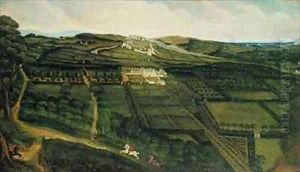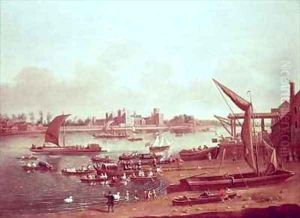P. Danckerts Paintings
Pieter Danckerts de Rij, commonly known as P. Danckerts, was born in 1605 into a family of artists in the Dutch Republic. His exact birthplace is not well-documented, but it is known that he belonged to the Danckerts family, who were active in the arts as painters, engravers, and cartographers. There is limited information about Danckerts' early life and training, but it is likely that he learned his craft within the family studio, which was a common practice at the time.
During his career, Danckerts primarily worked as an engraver and is known for his detailed maps and architectural prints. His works were characterized by precision and clarity, reflecting the Dutch Golden Age's emphasis on careful observation and realistic representation. Unfortunately, not many of his works are widely recognized today, and his contributions have often been overshadowed by more famous contemporaries.
Danckerts' death is recorded in 1656. While his legacy may not be as prominent as that of other Dutch Golden Age artists, his work remains a valuable resource for understanding the cartographic and visual culture of his time. The Danckerts family continued to be involved in the arts for generations, which helped to preserve the memory of Pieter Danckerts de Rij's contributions within the context of the family's collective achievements.

